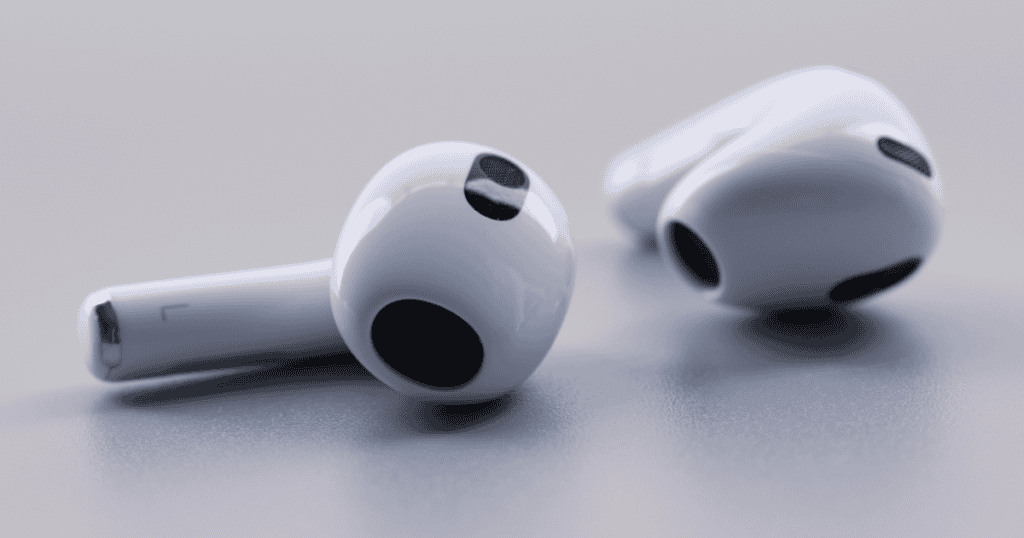If you’re experiencing sound issues in one of your AirPods, you’re not alone. Many users encounter this problem, which can be caused by a variety of factors. Thankfully, there are several straightforward steps to get your AirPods back in working order. This guide will walk you through each step, from checking the battery to updating firmware and even contacting Apple Support if necessary. Let’s dive in and explore how you can resolve these sound issues efficiently.
Step 1: Check Battery Levels
One of the first things to check if you’re experiencing sound issues in one AirPod is the battery level. AirPods rely on balanced power to function correctly, and if one AirPod has a lower battery than the other, it might stop producing sound.
- Checking Through the Charging Case: Place both AirPods in their charging case and close the lid for a few seconds. Open the lid and look at the LED indicator inside the case. A green light means they’re fully charged, while amber means they need more power.
- Battery Check on Your iPhone or iPad: When you open the AirPods case near your iPhone or iPad, a pop-up should appear on the screen showing the battery levels for each AirPod. If one AirPod has a significantly lower charge, it’s time to charge them both.
- Optimal Battery Management: AirPods generally offer about 5 hours of listening time on a single charge, and with the charging case, you get more than 24 hours of listening time. If you notice one AirPod consistently draining faster than the other, it may indicate a hardware issue, and you might want to consult Apple Support for further advice.
By ensuring that both AirPods are fully charged, you can often resolve sound issues related to low battery.
Step 2: Reset Bluetooth Connection
If charging doesn’t solve the problem, the next step is to reset your Bluetooth connection. Sometimes a simple reset can resolve sound and connectivity issues.
- Forget the Device on Your iPhone/iPad: Navigate to Settings > Bluetooth, find your AirPods on the list, tap the “i” icon next to them, and select Forget This Device. This removes the current connection.
- Reset AirPods: Place both AirPods back into the charging case, close the lid, and wait for about 30 seconds. Then, open the lid and hold down the setup button on the back of the case until the LED light flashes amber, then white. This signals that your AirPods are in pairing mode.
- Reconnect: Go back to Settings > Bluetooth on your device and select your AirPods from the list of available devices to reconnect them.
By resetting Bluetooth, you’re essentially starting fresh, which can resolve lingering connectivity issues that cause sound problems.
Step 3: Reconnect AirPods Manually
Sometimes a simple reconnection can resolve the issue if one AirPod still has no sound after resetting the Bluetooth connection.
- Charge and Wait: Place both AirPods in the charging case and let them charge for about 30 seconds before opening the case near your device.
- Automatic Pairing: Ideally, your iPhone or iPad should recognize the AirPods automatically. If not, head to Bluetooth settings, locate your AirPods, and tap to reconnect.
- If Connection Fails: Forget the device from Bluetooth settings as explained earlier, then manually hold down the setup button on the charging case until the light flashes white. Reconnect them from the list of available devices.
By manually reconnecting, you can establish a fresh link between your AirPods and device, which can often resolve sound issues.
Step 4: Adjust Stereo Balance
If you’re still not hearing sound in one AirPod, the issue could be with the stereo balance settings. The balance may be skewed, causing sound to come from only one side.
- Accessing Balance Settings: Go to Settings > Accessibility > Audio/Visual on your device.
- Adjust the Balance Slider: You’ll see a slider that controls the balance between the left and right AirPods. Ensure that the slider is centered to distribute sound evenly.
- Testing Balance: Play a stereo audio track and listen closely to check if sound is balanced. Sometimes, software updates or accidental adjustments can skew the balance, causing audio to play from only one AirPod.
Keeping the balance centered ensures that sound comes from both AirPods evenly, which is crucial for stereo listening.
Step 5: Inspect for Physical Damage
Physical damage or debris can impact the performance of your AirPods, causing one to lose sound. Take a few minutes to inspect them closely.
- Visual Inspection: Look for visible damage such as cracks, dents, or other signs of wear and tear. Damage like this can affect sound quality or prevent sound from coming through.
- Speaker and Microphone Check: Blockages in the speaker mesh or microphone openings can cause audio problems. Check for dust, lint, or earwax that might be obstructing the sound.
- Cleaning Tips: If you see debris, use a soft, dry cloth and a small brush (like a toothbrush or a dedicated electronics brush) to clean the mesh gently. Be careful not to push any debris further into the AirPod.
Keeping your AirPods clean and damage-free is essential for maintaining optimal sound quality.
Step 6: Update Device Firmware
Outdated firmware can sometimes be the reason for sound issues in your AirPods. Updating the firmware ensures that your AirPods and device work seamlessly together.
- iOS Update: Make sure your iPhone or iPad is running the latest version of iOS. Go to Settings > General > Software Update to check for updates.
- AirPods Firmware: To check your AirPods firmware, connect them to your device, go to Settings > Bluetooth, tap the “i” icon next to your AirPods, and view the firmware version. AirPods update automatically when connected to an iOS device.
- Automatic Updates: Keeping both your device and AirPods up-to-date ensures they have the latest bug fixes and performance enhancements, which can resolve connectivity and sound issues.
Updating your firmware can often solve issues related to compatibility and device performance.
Step 7: Contact Apple Support
If you’ve tried all the above steps and still have no sound in one AirPod, it might be time to contact Apple Support for professional help.
- Apple Support Options: Visit the Apple Support website to initiate a support request. You’ll have options for live chat, phone support, or booking an appointment at an Apple Store or authorized service provider.
- Check Warranty: If your AirPods are still under warranty, repairs or replacements may be covered. AirPods Pro, for example, often have extended service options.
- Prepare for the Appointment: Document the steps you’ve taken so far—such as charging, resetting, and cleaning your AirPods—to provide context to Apple Support.
Apple Support can help diagnose and fix any persistent issues, ensuring your AirPods are back to optimal performance.
MacReview Verdict
If you find that one of your AirPods has no sound, there are a variety of troubleshooting steps you can take. Start by checking battery levels and resetting the Bluetooth connection. You can also adjust the stereo balance or inspect for physical damage. Firmware updates are another quick fix that can resolve connectivity issues. If all else fails, Apple Support is there to help. With these steps, you should be able to restore full sound in no time.




